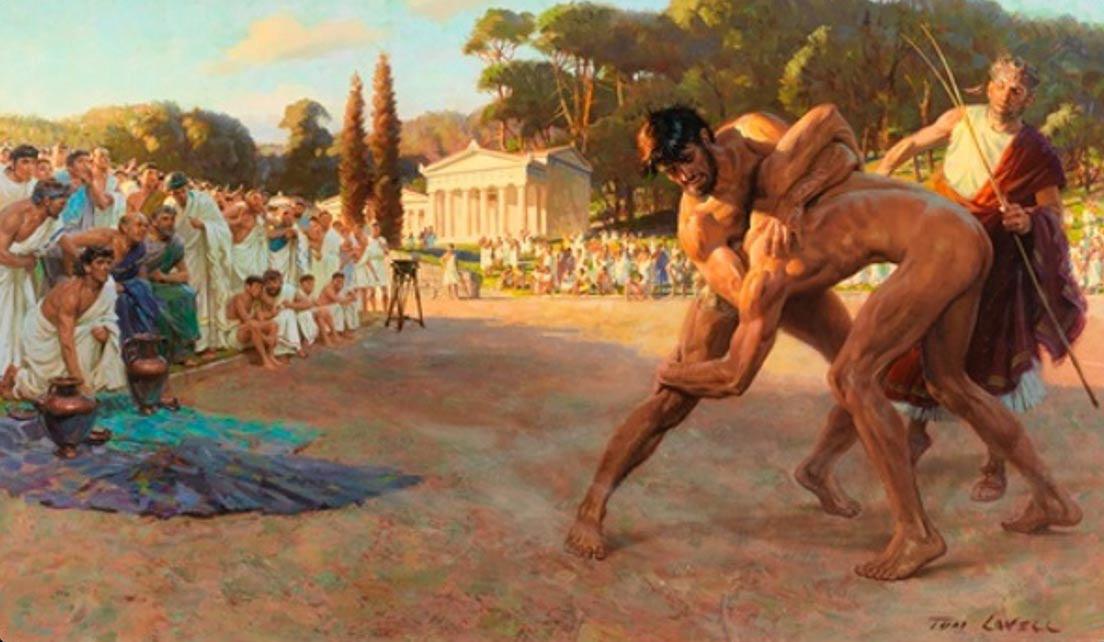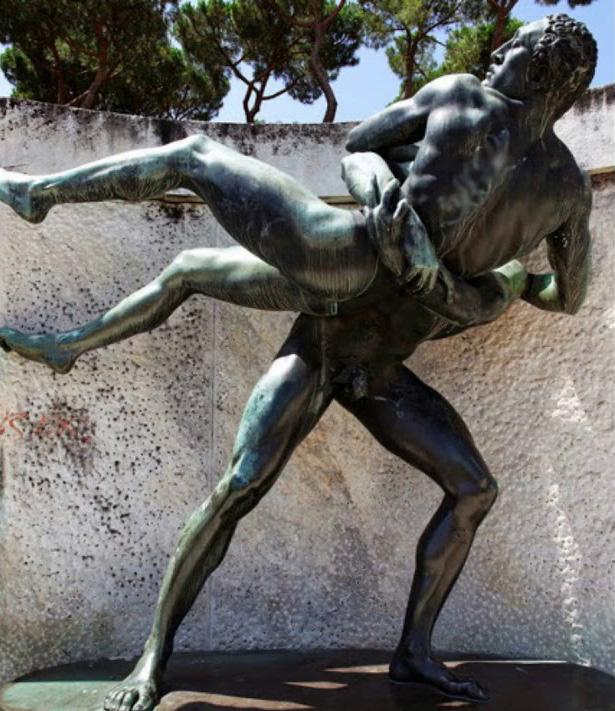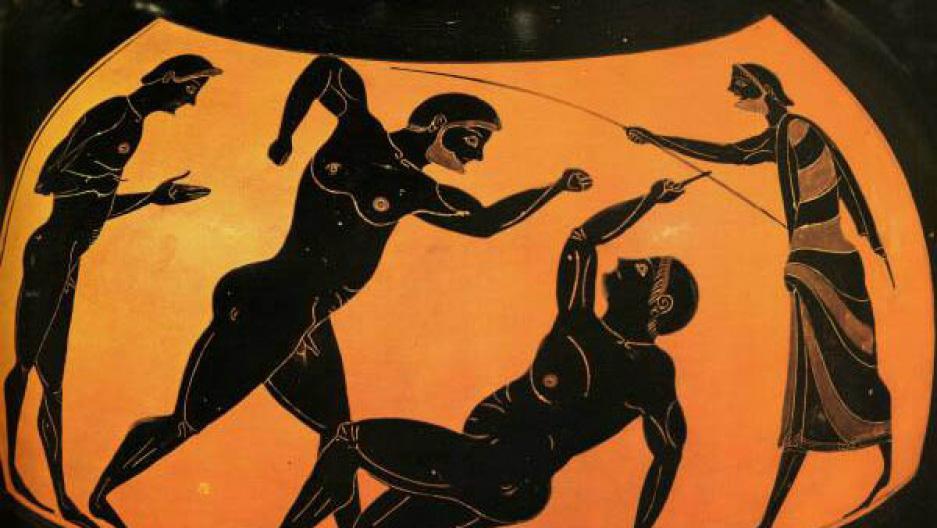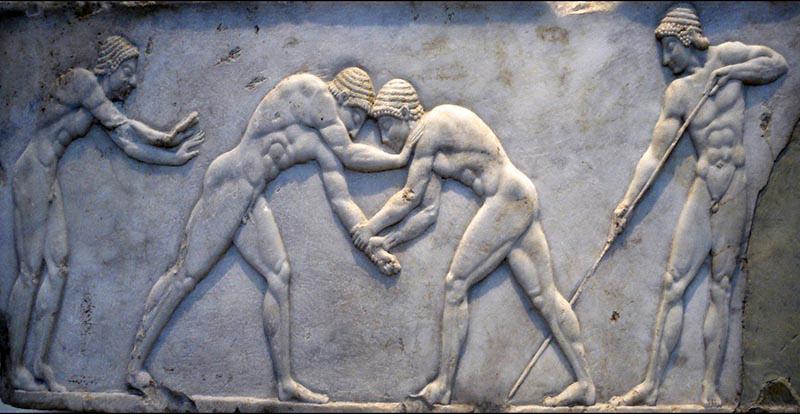
4 minute read
PANKRATION Freakie-Do
PANKRATION
Freakie-Do
Advertisement
Pankration, the most violent combat sport in Greece Pancratius means "total strength." In this fighting discipline, all kinds of kicks, blows and grabs were allowed.
It is considered the historical background of contemporary mixed martial arts. Some sources suggest that it was Theseus who developed the pankration during his confrontation with the minotaur in the labyrinth and who later transmitted it to humanity. In ancient times, from Greece to Mesopotamia, competitive and fighting sports were practiced, but none was as relentless as pankration. The Greek term pankration means "total force" and reveals the objective of the confrontation: to deploy the totality of one's own agonistic capacities to win the combat. The combat was won by the one who managed to completely reduce his opponent or in case of surrender (in this case, it was enough to lift a finger). and experienced wrestlers, as the fighting could reach such ferocity that, according to ancient sources, some wrestlers even died. The boys trained with instructors, while professional athletes enhanced their abilities with coaches who reinforced their weaknesses. The pankration combined boxing and wrestling techniques. Kicks and blows to the face were allowed, and holds and holds were used to immobilize the opponent, reduce him to the ground and force him to submit. Bites and attacks to the eyes were the only prohibited maneuvers, according to Philostratus in his work Images, although the Lacedaemonians even allowed this type of attack. The philosopher Xenophanes dedicated comments to the practitioners of pankration, who obtained food, drink and praise from their fellow citizens when they were victorious. To the author, wrestling matches seemed frightening.
The discipline demanded physical strength, dexterity, and stamina. There were no internal categories, for which corpulent wrestlers could face other fibrous or small ones, although two age groups were established: men and boys. They fought in a space of sand that was small enough to force hand-to-hand combat. The wrestlers faced each other undressed and under the sun, with their bodies anointed with oil and their hands bare. Since the matches were held outdoors and in full sun, the wrestlers looked for a favorable fighting position that avoided glare. They used to adopt a slightly forward leaning posture that favored balance and flexibility. Kicks were an essential part of common fighting techniques and punches to the stomach. Women were not allowed to participate as audience.
From the middle of the 7th century BC, the pankration became an Olympic discipline. During the exhibitions, the wrestlers demonstrated their courage, strength and virility. Pankration was not only a sport practiced in the city area, but was also used as a martial art in battles.

In his work Histories of him, Herodotus points out that, in the battle of Mycala, the Athenians used the pankration to confront the Persians. War often required soldiers to engage in hand-tohand combat, and the pankration was useful in those cases where no weapons were available.
In the pankration, there were two basic combat modalities, the anō pankration or fight in a vertical position and the katō pankration or fight on the ground. In vertical fighting, kicks gained essential importance, especially those thrown at the lower half of the body, which served to unbalance the adversary. The fight on the ground, on the contrary, resorted mainly to keys and holds.
As described by Luciano in his work Hermótimo, the couples who had to fight were cast lots by depositing tokens or beans marked with the letters of the alphabet (two alphas, two betas and so on) in an urn. Each contestant had to draw a token. When all the wrestlers had drawn theirs, the referee or judge checked the letter marked on each of them and established the pairs that had to face each other. Probably in tournaments each wrestler would go through several rounds before a victor was declared.
Details of the life and the most notorious combats of some wrestlers are known thanks to inscriptions and the works of authors such as Pausanias, Herodotus and Luciano. Theagenes of Thasos was the winner of several Olympic games, while Marcus Aurelius Demóstrato Dama, one of the most famous pankration wrestlers in imperial Rome, won tournaments in Ephesus, Rome and Delphi. With the emergence of Rome as a sprawling power, pankration was adopted as a sport in the empire. Scenes of pankration are depicted on sarcophagi and pottery, and wrestling matches were often held during the funerals of famous people. References
Strasser, J.-Y. 2003. La carrière du pancratiaste Markos Aurèlios Dèmostratos Damas. Hellenic Correspondence Bulletin, 127(1): 2003. pp. 251-299; doi : https:// doi.org/10.3406/bch.2003.7129
Zenou, T. 2022. Millennia before UFC, there was the brutal Olympic sport of pankration. The Washington Post (access: 02/23/2022).



